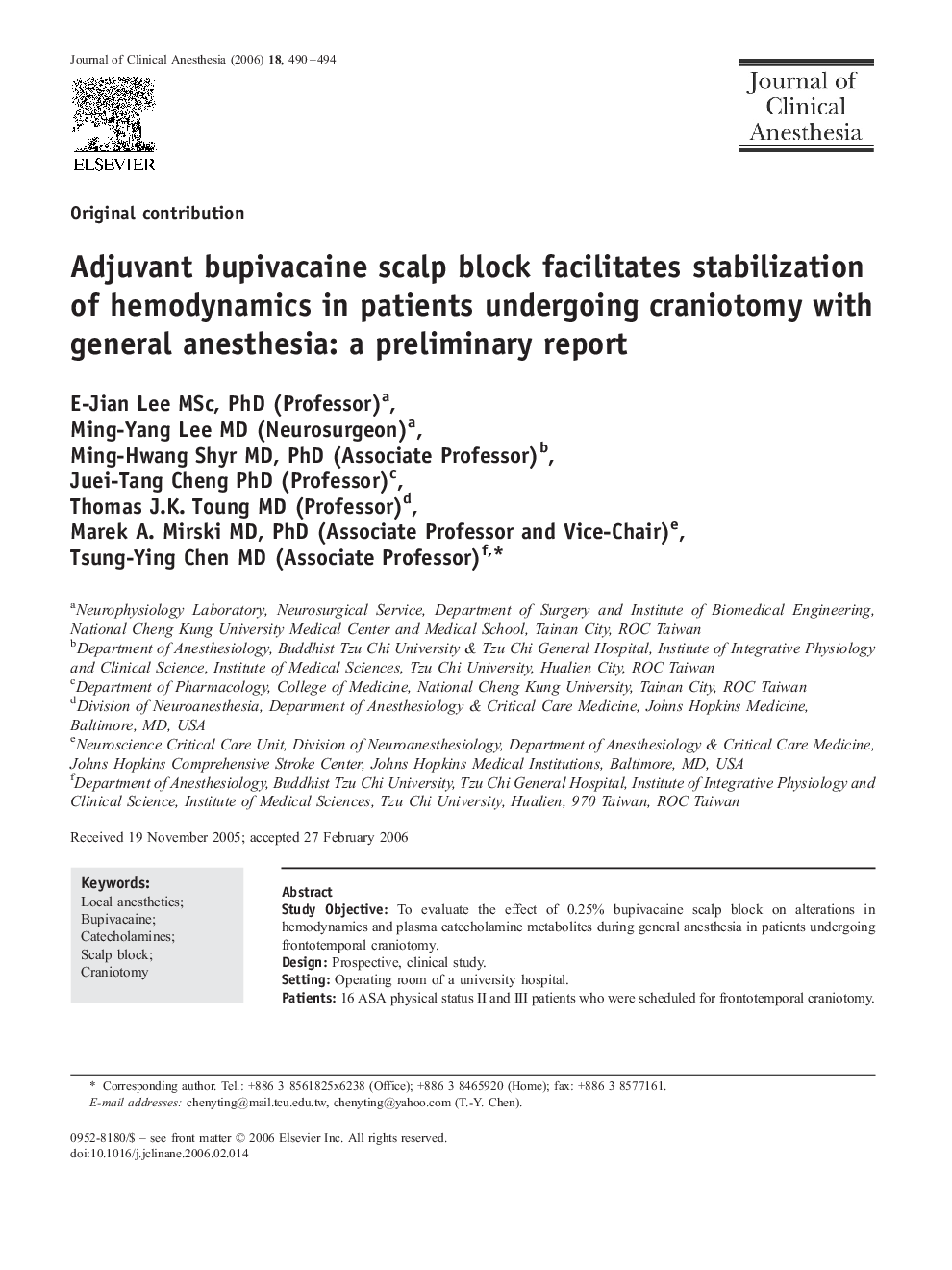| Article ID | Journal | Published Year | Pages | File Type |
|---|---|---|---|---|
| 2763733 | Journal of Clinical Anesthesia | 2006 | 5 Pages |
Study ObjectiveTo evaluate the effect of 0.25% bupivacaine scalp block on alterations in hemodynamics and plasma catecholamine metabolites during general anesthesia in patients undergoing frontotemporal craniotomy.DesignProspective, clinical study.SettingOperating room of a university hospital.Patients16 ASA physical status II and III patients who were scheduled for frontotemporal craniotomy.InterventionsPatients were prospectively randomized to receive a saline control (C group) or bupivacaine scalp block (SB group) as an adjuvant to general anesthesia using isoflurane in 50% N2O-O2.MeasurementsRoutine monitoring of electrocardiogram, heart rate (HR), and mean arterial blood pressure (MAP) were recorded at two-minute intervals from the beginning of anesthesia until 10 minutes after incision, followed by 5-minute intervals throughout the remaining course of the surgery. By prospective design, increases in MAP or HR by 20% above the mean baseline values were treated with 2.5 mg/kg of thiopental combined with 2 μg/kg of fentanyl. Arterial blood was sampled at 5 minutes before and after skin incision and at the start of dural opening for measuring serum catecholamine metabolites by high-performance liquid chromatography.Main ResultsOnly two patients in the SB group needed additional anesthetics for stabilizing their hemodynamics during the course of anesthesia. In contrast, all C group patients required supplemental anesthesia for controlling the abrupt rise in hemodynamic parameters. In addition, absolute MAP and HR values were significantly higher in the C group than in the SB group during the surgical period between incision and dural opening. The differences in hemodynamics observed between the two groups were, however, not accompanied with a significant change in plasma catecholamine metabolites at each predetermined time interval measured.ConclusionsPretreatment with 0.25% bupivacaine scalp block appeared to be an effective adjuvant treatment for maintaining stable hemodynamics for patients undergoing craniotomy during general anesthesia especially at the time of skin incision and dural opening. This study design was unable to discern any correlation between elevation in hemodynamic parameters and a rise in serum catecholamine levels.
